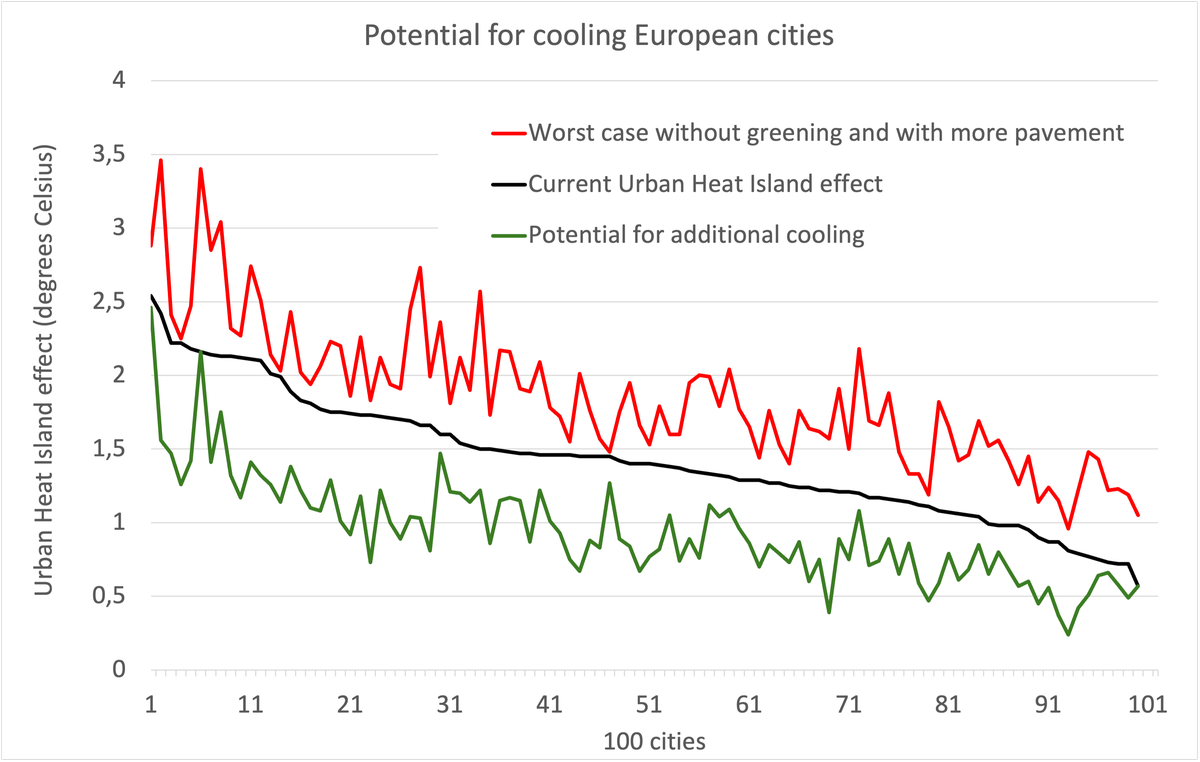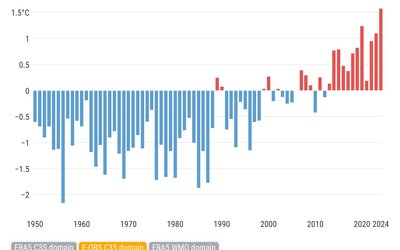
Graph based on data by Lauwaet et al., 2024.
The temperature in cities is generally higher than in the surrounding rural environment. This urban heat island effect adds to the impact of climate change and increases heat stress for city dwellers. The observed increase of heat-related mortality during heatwaves is not only due to the weather itself but also results from this urban heat island effect. We can’t do much about the weather, but we can reduce this additional heat island effect. Two of the most promising measures are greening (trees, shrubs and grass) and less pavement. The resulting increase of shading, evaporation and transpiration by plants will reduce air temperature.
A European-wide impression
For 100 cities spread across Europe – from southern Scandinavia to the south of Spain and from Ireland to the Baltic States and Greece – the potential to reduce the urban heat island effect has been calculated. The scientists used a combination of urban climate modeling and statistical modeling. They calculated three characteristics of the urban climate: the current heat island effect, the cooling potential of more greening and less pavement, and the cooling that is currently already effective because of the vegetation and the absence of pavement that is already part of the current city layout. If you subtract this latter value from the current heat island effect, you get an impression of what the heat island effect could have been in a worst case without vegetation and much more pavement.
Their results are an average over a 10-year time period, from 2008 to 2017, and for the summer season only.
Between 1 and 2°C, from worst case to optimum
According to this study, the average urban heat island effect for all 100 cities is 1.43°C. The values for the individual cities range between 0.57 and 2.54°C. These values include the current cooling of an average of 0.45°C (range individual cities: between 0.03 and 1.82°C).
There is still a large potential for extra cooling from more greening and less pavement, ranging between 0 and 1°C, with an average value for all 100 cities of 0.49°C, slightly higher than the estimated current cooling.
There are no clear trends in the size of the urban heat island effect and the potential for additional cooling across Europe.
The values for the urban heat island effect presented in this study are relatively low when compared to the results of previous studies. According to the authors this is due to the fact that they looked at 10-year average air temperature values and left out the 10% highest values in their results.
Source: Lauwaet et al., 2024. Urban Climate 54: 101850.








